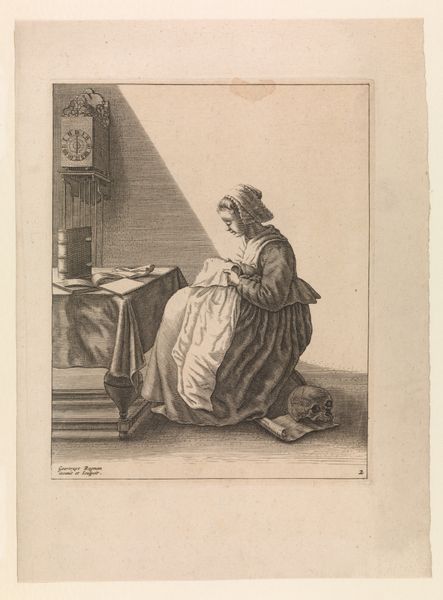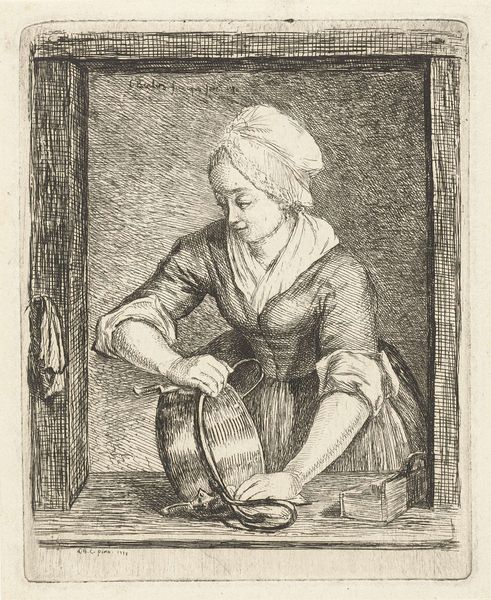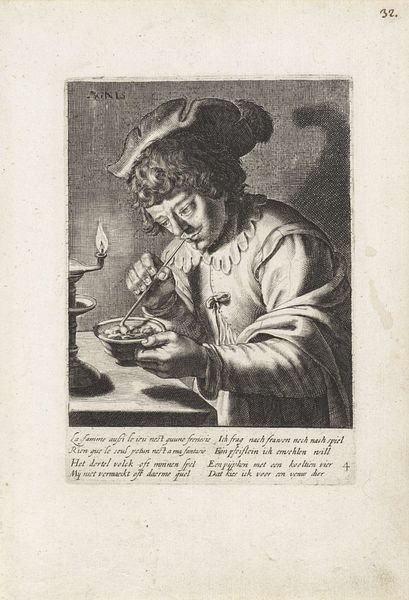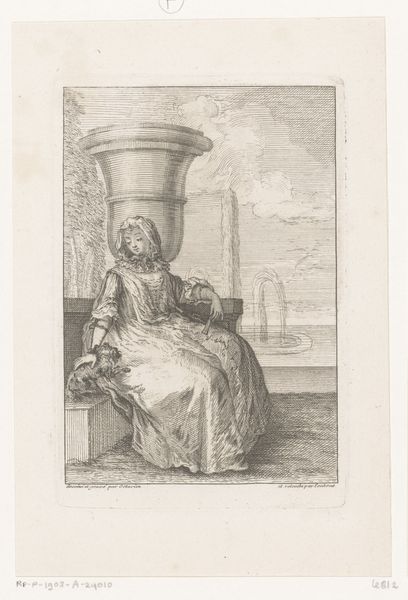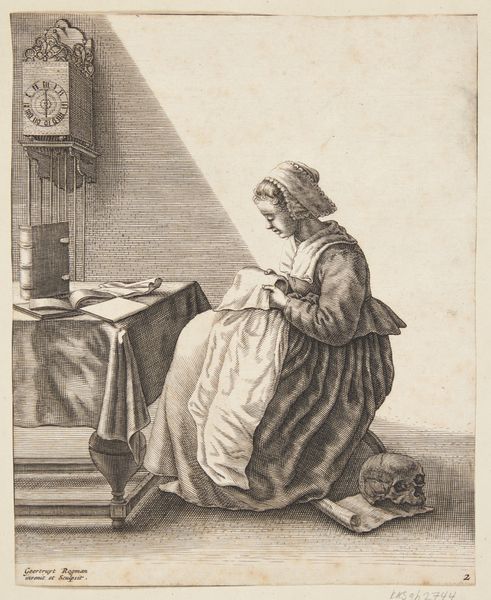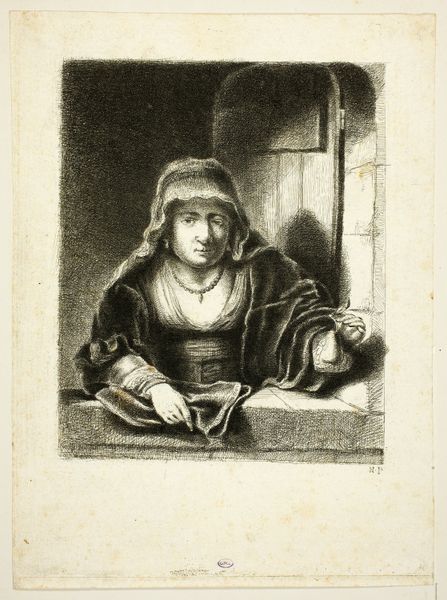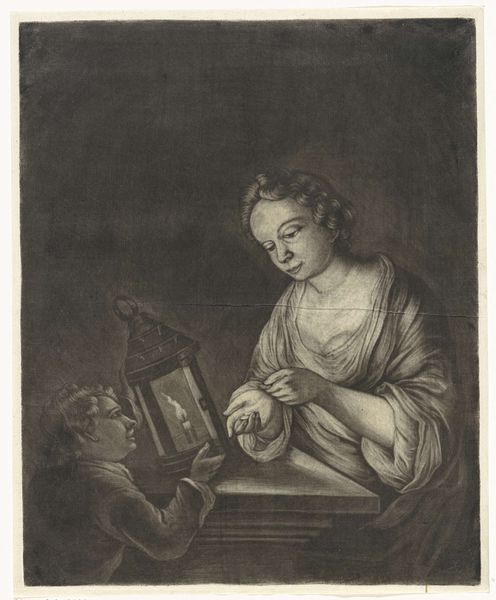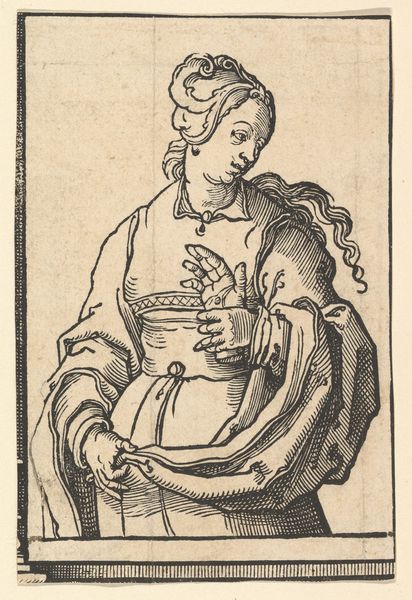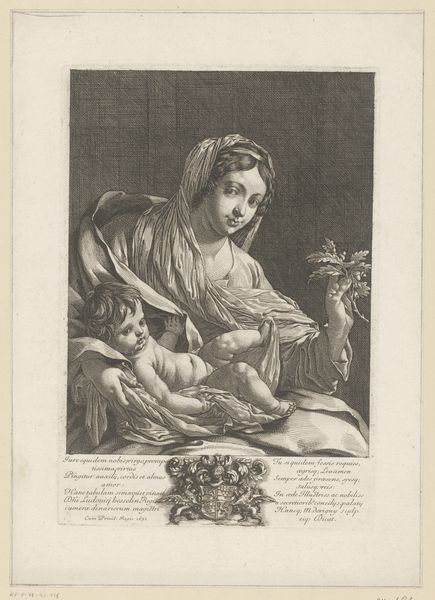
print, engraving
#
portrait
#
baroque
# print
#
old engraving style
#
figuration
#
line
#
history-painting
#
engraving
Dimensions: height 118 mm, width 82 mm
Copyright: Rijks Museum: Open Domain
Curator: This is an engraving of Saint Maura, produced after 1626, now residing at the Rijksmuseum. What are your initial thoughts? Editor: Stark! The heavy lines create such a distinctive tone, almost meditative. I’m struck by the sheer craftsmanship in achieving that level of detail through such precise cuts. Curator: Indeed. The linear quality dominates the visual field, but notice how the engraver has meticulously modulated line density to give volume to Maura's garments and that remarkable halo effect. Consider the pattern on the fabric; observe how it guides your eye and the chalice's form creates focal gravity within the scene. Editor: That halo—it's almost explosive, right? Given that this is an engraving, how might we explore the tools and the act of production? Engraving involves the very act of cutting into the material... think of the labour invested here to give this spiritual object its form. It's quite astonishing, really. Curator: Absolutely. It highlights the paradoxical relationship between manual craft and spiritual expression. The halo contrasts markedly with Maura's focus as she diligently embroiders; it implies a certain piety interwoven with her craft. Consider how Baroque visual vocabulary like dramatic lighting and ornate fabrics adds meaning. Editor: And those textiles, arranged like she has an actual woven work basket there… I’m drawn to how the engraving imitates textile art—it creates such a resonant exchange of ideas about domestic labour as saintly practice. The materiality transforms its conceptual implications completely. Curator: Precisely! The cross-referencing—where each object becomes a sign referring to higher spiritual realities – elevates what may otherwise appear to be banal. Notice also the iconographic symbols like the chalice adorning her needlework? This connects everyday action and religious veneration, using complex Baroque symbolism. Editor: So, on the one hand we have a visual depiction rendering tactile work processes, on the other, a representation elevating labour through detailed representation. It offers rich points of contemplation about belief, action and material expression... it feels quite modern. Curator: Absolutely. And perhaps there’s an opportunity to further contextualize through understanding its social moment to understand its full impact. Editor: Indeed. Thank you for elucidating the artwork’s more intricate structural elements—I learned a lot through seeing the composition through a different lens.
Comments
No comments
Be the first to comment and join the conversation on the ultimate creative platform.
